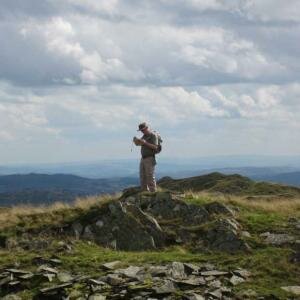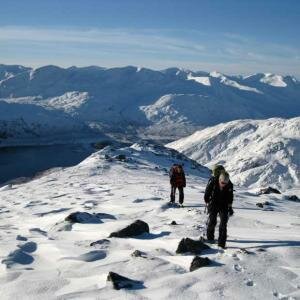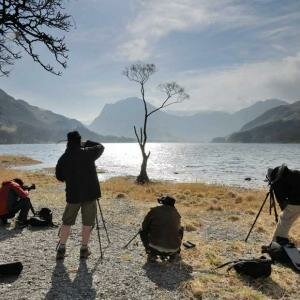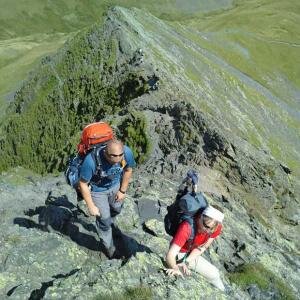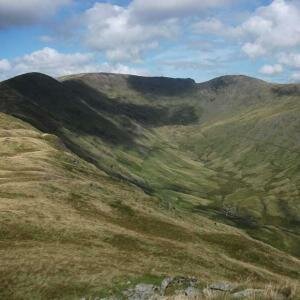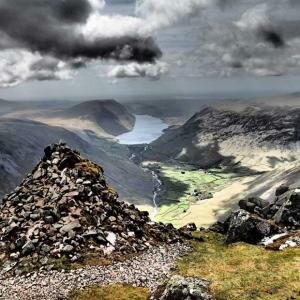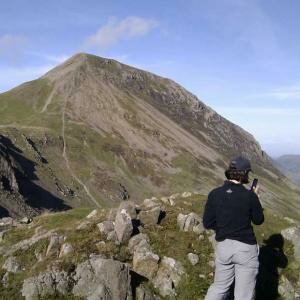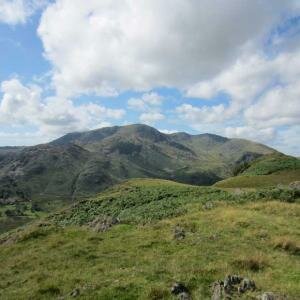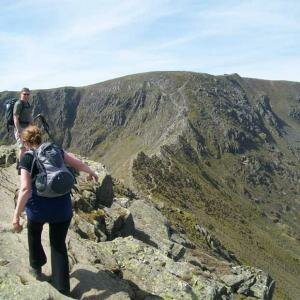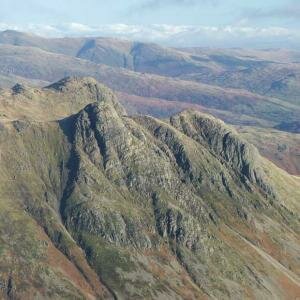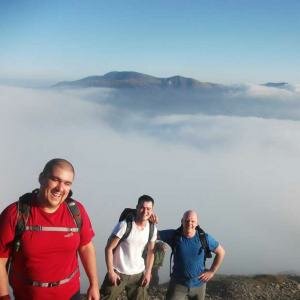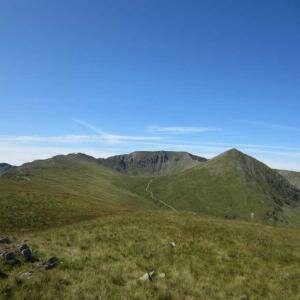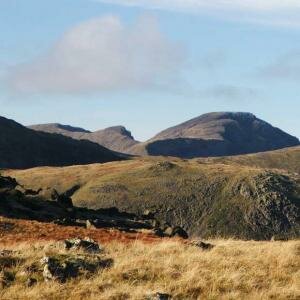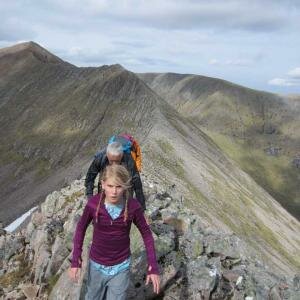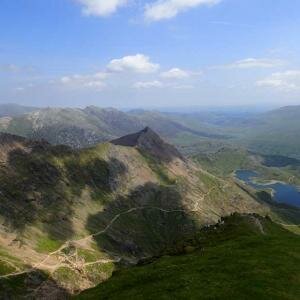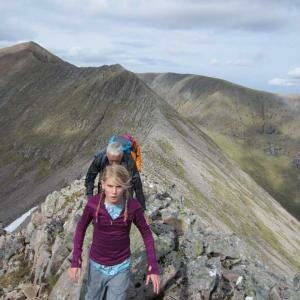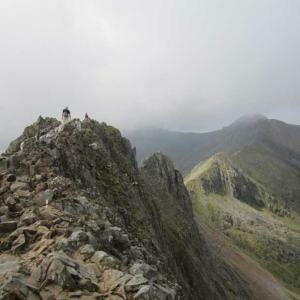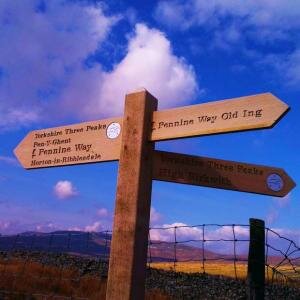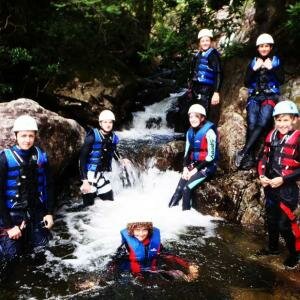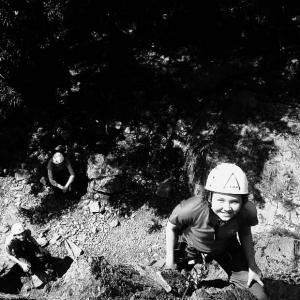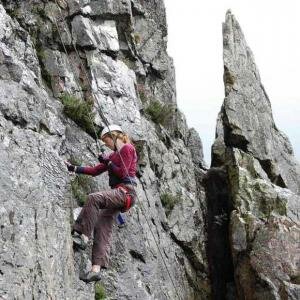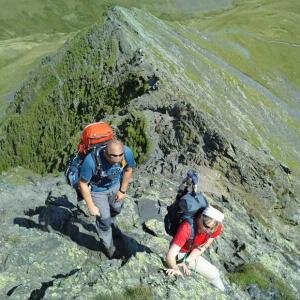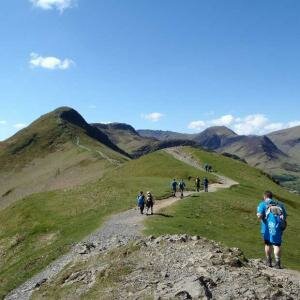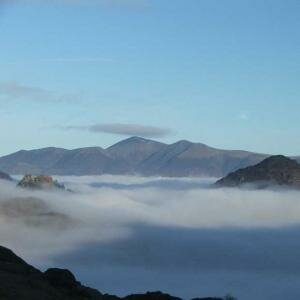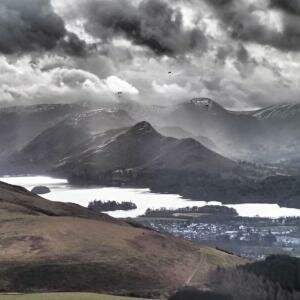
To stand on top of a continent, one of the Seven Summits is a stunning and unforgettable experience. Kilimanjaro is the largest free standing mountain in the world, standing three miles above the surrounding plains.
The Rongai route traverses the mountain from north to southeast, passing through rainforest on the lower slopes and close to glacial ice on Kibo’s summit cone.
Kilimanjaro is in fact a volcano, one of the highest in the world.
On 18th September 2011 as a group of 12 (myself, Michael, Tony, Dave, Matt, Sarah, Lara, Ashleigh, Jean, Bill, Arven and Martin) and 40 support staff which comprised of porters, 6 guides (Naimen, Anaelia, Joseph, Robson, Ruben, Nemis) and of course the cook (Johnson), we began our climb on the Rongai route from Nale Moru at 1950m. The first day was only a half day walk on a small path that winds through farmland and pine plantations. It was a consistent but gentle climb through attractive forest that shelters a variety of wildlife. The porters carrying over 20kg balanced on their heads came running past shouting Pole, Pole which means slowly, slowly. We reached our first overnight stop “Simba camp” late afternoon on the edge of the moorland at 2600m, having covered a distance of 7km. We sorted out our tents and then did an acclimatization walk for a further 1km. The food that was prepared by the cook was delicious; it was hard to believe the quality of the food could be so good at such high altitude.
The evening ritual was “washy washy time” about 5.30 pm which consisted of a bowl of hot water for our evening wash. Our main meal was served at 6.30pm each day and we where generally in bed before 8pm.
The morning ritual was that the guides woke us up at 6am to see how we felt and how we had slept. This was followed by bringing us a cup of tea, coffee or hot chocolate. Although I had taken my luxury item “my pillow” I found it very hard to get a full nights sleep. At 10 past 6 we had “washy washy time” again this consisted of a bowl of hot water for our morning wash. Our breakfast was served at 6.30am.
The following morning we had a steady accent up to the Kikelewa Caves at 3450m with superb views of the Eastern ice fields on the rim of Kibo, the youngest and highest of the three volcanoes that form the entire mountain. After lunch we left the main trail and started out across the moorland on a smaller path towards the jagged peaks of Mawenzi the second of Kilimanjaro volcanoes. We reached our campsite late afternoon in a sheltered valley near Kikilewa Caves at 3600m having covered a distance of 12km.
The following day we had a steep climb up grassy slopes rewarded by superb panoramas of the Kenyan plains to the north. We left the vegetation behind us close to Mawenzi Tarn at 4330m having covered 4km. This was a difficult day as the effects of altitude began to hit with a severe headache which seems impossible to shake off. Other symptoms of altitude sickness started to set in with loss of appetite. We arrived at camp and rested for an hour before covering a further 2km in the rain to aid acclimatization.
The following day we crossed the Lunar Desert on the “Saddle” between Mawenzi and Kibo to reach Kibo campsite at 4700m having covered a distance of 9km. This was an exhausting day and I was absolutely knackered and collapsed in the tent on arrival. The remainder of the day was spent resting in preparation for the final ascent before a very early night.
At this point my appetite was non existent and on the morning of the final ascent I could only managed to force down a Kelloggs Rice Krispies Square Bar and a cup of tea.
We layered up in anticipation of the cold; I had 5 layers on top plus my downs jacket, 3 layers on the bottom and two pairs of thick socks. I also wore a thermal hat, buff and balaclava. To be honest I did not really feel the cold which really surprised me.
We started the final and by far the steepest and most demanding part of the climb by torchlight at midnight. We plodded very slowly in darkness and cold at minus 17 degrees on a switchback trail through loose volcanic “scree” to reach the Crater rim at Gillman’s Point at 5686m. At this point I had been sick three times and Michael was suffering with cold feet but we dug in and carried on. I felt very tired and weak but found some inner strength as there was no way I was not going to reach that summit. At Gillman’s Point we rested for a short while to enjoy the spectacular views over Mawenzi and have a well earned cup of tea (with no milk). At this point two of our group (Bill and Jean) decide they were too weak to continue and started their descent back to camp. In addition we had already lost another member (Ashleigh) due to Altitude Sickness just after the start of the climb. Tony, Dave, Matt, Sarah,Lara, Arven and Martin had already left Gillmans point for the summit. Michael and I continued along the snow covered rim to the true summit of Uhuru Peak at 5895m with our guide Nemis, passing close to the spectacular glaciers and ice cliffs that still occupy most of the summit area.
I was sick a further two times and my lips had started to turn blue but after what seemed a lifetime we reached Uhuru Peak at around 9.30am We stopped for a short while to admire the fantastic views and take photos before starting our descent to Kibo Hut at 4,700m. Just after leaving the summit I was sick again so we had to descend fairly quickly. We reached Kibo Hut at around 12.15pm after walking for 12 and a quarter hours. We collapsed in our tent and a couple of hours sleep, later we were woken to continue our descent to our final campsite at Horombo at 3720m. This was an extremely long and hard day covering 22.5 k with over 17 hours of walking.
On the morning of the last day we woke at 6am for the “Tipping Ceremony” and the traditional dancing and singing. All the support staff and of course us climbers sang the local song:
Jambo. Jambo Bwana.
Habari Gani. Mzuri. Sana
Wa Geni. Mwakaribishwa
Kilimanjaro. Hakuna
Matata
It was amazing to see how appreciative the locals were to receive items that us Brits were not taking back to the UK, this included items like, gaiters, waterproofs, drinking canisters, gloves, shovel, sweets, even bin liners. Each member of our group donated $125.00 towards the tip which was divided amongst the 40 support staff. On top of this we gave individual tips to the guys who set up our tents each day and those guys who helped us down the mountain.
The following day we continued our descent to Marangu Gate, a sustain descent with wide views across the moorlands which took us into the lovely forest around Mandara at 2700m. We went off trail down 110 steps to visit a waterfall to take photos, the downside was we had to climb back up the 110 steps. The trail continued through semi-tropical vegetation to the National Park gate at Marangu by mid-afternoon for a well earned rest and a much needed shower and alcohol (but unfortunately they had no Southern Comfort!! So had to make do with Tia Maria and Malibu!!).
Climbing Killimanjaro is the hardest thing I have ever done it was so exhausting yet so rewarding. Nine out of our group of 12 reached the summit. Everest Base Camp here I come….
Many thanks to Janet for the above account of their ascent.


